My journey to becoming the best Occupational Therapist I can be. The good, the bad and the ugly.
Don't wanna be here? Send us removal request.
Text
The lessons carved by the Community fieldwork.
As we come to the end of the community fieldwork module, one cannot argue that this module is indeed like no other. Since the beginning of this module, our thinking has been challenged both professionally and personally. We had to constantly ask ourselves on a regular basis “but why?”. It is unfortunate that in all our academic career, we experienced only 6 weeks of intense critical thinking. The structure of our curriculum has narrowed our thinking into segments that make it difficult for us to be critical thinkers. With this module, unlearning to relearn is the foundation of becoming a critical thinker. And even though we may have only experienced this life changing period, there is still a lot of learning that needs to be done. There are still many questions that need to be asked and many norms that need to be challenged. In light of this introduction, this blog will explore the different lesson one has learnt during this intense period as well as the way forward into community service.

Image source: https://vfwauxiliary.org/wp-content/uploads/Community-Graphic.png
As the students placed in the community, it was required that a health promotion talk be done every morning in the clinic whilst the people were in the que to see the nurses. One understands the many benefits and positive impacts that are created because of health promotion. However, it was observed that the students always gravitated towards the infamous question “do you know what Occupational Therapy is?” in almost all health promotion talks. Of course they do not know about Occupational Therapy because not even our parents know what occupational Therapy is despite us having reached our final year as students in this profession. People in the profession try by all means to ensure that the community and other health professionals know about the profession by saying ‘who’ we are. However, one does not see nurses and doctors explaining themselves to any of the community members about their profession. Occupational Therapy came into existence in the early 1900s, and yet after over a 100 years, the profession is vaguely recognized (Moninger, 2023). Every morning, one saw the extent to which individuals in the community really do not know what the profession is all about. This then makes it hard for the people of the community to trust a profession that which they do not know. This would explain also why clients’ who were screened and found to be good candidates for therapy, never actually returned for therapy even after being booked an appointment. This would also explain why in other communities; they underestimate the impact this profession may have on their lives to an extend that they put in danger the very students who have been assigned to assist them. Therefore, professionally one has learnt from this fieldwork that, as depicted by the image below, ‘you can take the horse to the river, bit you cannot force it to drink the water’. Meaning that, in this context, one may bring as many life changing opportunities to a disadvantaged community however, one cannot make the people of that community see the value to those opportunities (Shmaltz and Menudo, 2018).

Image Source: http://www.strongbodies.com.au/mptrainers/you-can-lead-a-horse-to-water - Ram
Another lesson that one has learnt professionally is that there is so much division between and around the health care system. There is a division between the service user and the service provider meaning there is a division between the health practitioner and the clients’. This combination or rather this union, is not seen as a collaborative union. One party is seen more superior than another party. Perhaps, this is also one of the contributing factors to the community not trusting us as Occupational Therapist, because we do not resonate with them, we do not recognize with them. We see ourselves as here and them as there. After many years working in this particular community, why are we not seen as part of the community? Have we not immersed ourselves in the community enough? Have we not immersed ourselves deep in the struggle lives of these people? Or is it that after many years working in the community we still are thinking mediocrely about the needs of the community. There is also a division among service providers and other service providers which is a division between health professionals and other health professionals. Again, this union is not seen as a collaborative union working together to make the lives of these people better. However, one party is seen as superior that the other. Phrases such as ‘the OTs are better than the nurses’ or ‘the physios are better than the OTs’. When did health care service provision become a competition? Professions are in such competition with one another they actually forget that the lives of other people are literally in their hands. We get caught up in the salary, the uniform and the business behind health care and forget to realize that these people are trusting us with their lives whilst we busy argue about which profession is better than the other. This image below evoked the same meaning as the one above, that health care system has become more of a business than a service that seeks to save the lives of the people.

Image by Brian Easton (2023)
One would honestly need an entire book to explore the personal lessons learnt in the community because there are many. In my journey of becoming a critical thinker, I had to unlearn the teachings of the book and learn the teachings of reality. The wonderful thing about Occupational Therapy is that it creates very creative therapists however, in a community setting, the community needs more of the critical thinking therapists that the creative therapist. Surely the creative therapist comes in very handy, however, the critical thinker is able to evaluate and re-evaluate the needs of the community to establish a way forward. Personally I am now one of the few people who are starting to slowly desensitize our communities about HIV statuses, because why should one hide. According to Malcolm (1998), HIV related stigma is one of the reasons why individuals do not seek health care services. HIV may be part of a person but it does not make them less of a human being thus, the importance of destigmatization in our society. To further reiterate the point above, these are the hands of a diverse group of people, and yet one would not be able to tell which of these people have HIV/AIDS.

Image by AtWork Australia (n.d).
Another lesson that I have learnt is that personal growth only happens to those who challenge themselves. Often I was scared to challenge my westernized way of thinking as well as challenging the norms of a broken society. However, I realized that the more I challenge my thinking, the more I longed for the knowledge and the wisdom of how to better serve the community. The more we walked in and around the community, the more I longed for those people to recognize me as their own. However, that meant that ‘challenging our thinking’ was also a responsibility of the community members. The community members themselves need to challenge their living conditions and shy away from being a mediocre community member. They need to see the value of the water we bring to them so that they see it worthy to be drank. Fortunately, as therapists we do not have magic powers, we present realistic and evaluated water based on the needs of the people of the community.
We can only achieve better results if we work as a collaborative union together with the different professionals and community members. We have the capabilities to bring life changing opportunities to the community through our therapy, we just need to think deep enough. The community has the potential to be great but first, it starts with a great Occupational Therapy student who refuses to be narrow minded in their thinking.
REFERENCES
Shmaltz and Menudo. (2018, January 22). Famous sayings: #97 — ‘You can lead a horse to water. . .’ Shmaltz and Menudo. Retrieved 16 August, 2023, from https://shmaltzandmenudo.wordpress.com/2018/01/21/famous-sayings-97-you-can-lead-a-horse-to-water/
Moninger, M. (2023). A brief history of occupational therapy. myotspot.com. Retrieved 16 August, 2023, from https://www.myotspot.com/history-of-occupational-therapy/
Malcolm, A., Aggleton, P., Bronfman, M., Galvao, J., Mane, P., & Verrall, J. (1998). HIV-related stigmatization and discrimination: Its forms and contexts. Critical Public Health, 8(4), 347-370.
0 notes
Text
Working towards sustainable development goals in a community setting.
We live in a very fast pace environment, where everything is fast and quick and everyone is trying to make ends meet. Everyone is trying to make the best of what they have in order to provide for their families and loved ones. However, all of that is in the expense of other people, animals, the environment and our planet. We are living such a fast pace life that we forget to take care of our environment and other people that are not our family members. We live a life like there is no tomorrow for future generations. We all have goals for ourselves and our families, but what about goals for our planet? We all should have a vision of what kind of a planet our grandchildren will be living in. There are 17 sustainable development goals in total for our planet. Goals come with a huge responsibility of ‘action’. The goal is absolutely pointless to have if one does not have a ‘plan of action’ for the goal. The image below shows all 17 sustainable development goals however, this blog will present only five of these goals that we, as the students working in a community setting, intend to work towards.

(Image by UN News Centre, 2015)
As health care practitioners working in the health care system, we are guided by many acts and laws in our practice to ensure that all individuals receive efficient health care service. Goal 3 of the sustainable development goals is “ensuring healthy lives and promote well-being for all ages” (Martin, 2023). In our profession, we ethically assess and treat our clients using occupations and environmental modification to ensure that they live a quality lifestyle which promotes healthy lives. In the community, we also assess and treat people of all ages, from the youngest of infants to the senior citizens. We also ensure that mothers get efficient and effective maternal health care treatment for better health of the mother and the baby during pregnancy. We promote well-being for all ages through our health promotion talks on a daily basis. According to Hone et al. (2018), delivering health promotion and education intervention increases long-term benefits such as adhering to treatment from our clients. Therefore, it was essential for this community to receive the educational intervention to increase treatment adherence to HIV medication because it was observed that a large number of people in this community have a positive HIV status. Below is a visual representation of the percentage of people that were infected with HIV in Africa, 2019. South Africa having the largest percentage in the entire continent.

(Image by IHME, Global Burden of Disease, 2019)
Gender inequality is seen all over the world. However, in a community setting, one gets to see how gender inequality and patriarchal systems affect the women of South Africa. There is a large number of women who are unemployed and being taken care of by their husbands or male partners. They may be women who are willingly accepting of this lifestyle, however, the vast majority of these women endure physical, emotional and sexual abuse from their partners because the society fails to offer them a better life through gender equality. Moreover, if there was gender equality then most of these women would have permanent jobs and earning an income for themselves without having to endure domestic abuse to keep a roof over their heads. If gender equality existed, then more women would have high paying position in companies and large businesses. For this community, patriarchal ideas still linger because most women also do not work because their husbands do not agree for them to work. We have established programs for these communities to empower women to be independent with their income generation. We uplift them through programs that upskill them with entrepreneurial skills, business management skills and other ways to use their skills such as dressmaking and hairdresser to earn an income. The image below depicts the reasons for gender inequality, where men get more opportunities than women, just for being men.

(Image by Chuck Gallagher, 2016)
According to Martin (2023), quality education is goal 4 of the sustainable development goals because education provides individuals with the knowledge about healthy lifestyle choice and ability to generate income through the knowledge they have acquired. In many countries, including South Africa, the systems put in place in the education sector provide a huge setback into education inequities. Poor infrastructure and overcrowded classroom make it harder for all children to receive a quality education. Children with disability, children from disadvantaged backgrounds and girls are the most affected by these systems (Martin, 2023). According to a study by Amnesty International (2021), the teacher-learner ratio in most parts of the country exceeded the 1:35 ratio to double this amount. This is very concerning because some of these learners require special needs and do not receive adequate attention as they require. Therefore, in the community, we worked very closely with the teachers in primary schools to ensure that children with learning difficulties are detected early for assessment and early intervention. The teachers were also given classroom ideas that they can implement to ensure that all learners receive quality education even with a broken education system. Below is an image of a familiar example in Africa, a disabled young boy from a disadvantaged background with poor infrastructure in the school environment.

(Image by Thomas Freteur/HI, 2020)
According to Gumbi (2023), the unemployment rate in South Africa for 2023 is 32.9% with a particular concern to youth unemployment at 46.5%. Many individuals in the community who make up the employable population of ages 15 to 64 are unemployed and very little of them have successfully managed to start businesses such as a small tuck shops in the area. Goal 8 is about “promoting inclusive and sustainable economic growth, employment and decent work for all” (Martin, 2023). In the Kenville community, we have established a program that is open to all individuals of the employable population to participate in upskilling them with skill for income generation. The vast majority of these people do not have qualifications therefore, it was important for this program to include basic skills that do not require university qualifications in order to obtain employment. Thus, making sure that the project is sustainable, inclusive and contributing to economic growth.
Goal 10 of the sustainable development goals speaks of reducing inequalities in health care service provision. The first inequality in health care service provision is that people from disadvantaged backgrounds, like a community such as Kenville, do not receive optimal services in public institutions due to inability to afford private services. Therefore, being in the community ensures that all clients in need of therapy receive efficient and effective therapy without discrimination. Women and people with disabilities are particularly more discriminated in the health care system then other populations (Martin, 2023). The program implemented at these communities ensure that women and people with disabilities are not discriminated against however, empowered through upskilling program and inclusive treatment.
In closing, four Occupational Therapy students working in a community based setting will not change the state of the world however, it can change the state of the people in that specific community. Imagine if these four students collaborated with the people of this community to make that environment and their lives a better place. In another community, other students and the people of that community can change the state of their environment and better their lives. Eventually, if each student, practitioner and community members plays their part in the common goals we all share for our society, then little by little will we change the state of the world. Not only for us, but for future generations to come.
REFERENCES
Amnesty International. (2021). South Africa: Broken and unequal education perpetuating poverty and inequality. Amnesty International. https://www.amnesty.org/en/latest/news/2020/02/south-africa-broken-and-unequal-education-perpetuating-poverty-and-inequality/
Gumbi, K. (2023, May 16). South Africa’s unemployment rate rises amid power crisis. Reuters. https://www.reuters.com/world/africa/south-africas-unemployment-rate-rises-329-q1-2023-05-16/
Martin. (2023, August 9). Health - United Nations Sustainable Development. United Nations Sustainable Development. https://www.un.org/sustainabledevelopment/health/
Hone, T., Macinko, J., & Millett, C. (2018). Revisiting Alma-Ata: what is the role of primary health care in achieving the Sustainable Development Goals?. The Lancet, 392(10156), 1461-1472.
Image by Chuck Gallagher, 2016 https://www.chuckgallagher.com/wp-content/uploads/2016/10/Gender-Equality.jpg
0 notes
Text
Dismantling Injustices from an OT perspective.
The merge between the ‘arts’ and the ‘science’ in the Occupational Therapy profession is truly incredible. The science behind the profession is that it is an evidence-based practice with frameworks, theories and models that shape the understanding of the “art”. The profession vividly emphasizes the importance of participation in desired meaningful occupations for ALL individuals. This is what one may choose to consider as the art of occupational therapy. The art behind Occupational Therapy is the mere fact that they consider all humans as having basic occupational rights. In the more recent years, the profession has increased its’ vocabulary by establishing words such as “occupational justice”. And surely if there is “occupational justice” there must be “occupational injustice”. This blog will seek to explore these some injustices and how the profession can move towards dismantling them going forward.

As mentioned above, occupation justice is a term that has newly emerged in the Occupational Therapy profession (Durocher et al., 2013). Occupational justice recognizes human beings as occupational beings that have the need, and therefore the right, to participate in desired meaningful occupations (Durocher et al., 2013). Townsend and Wilcock (2004) include in their work, some words that are associated with the term ‘occupation’ which are doing, action and participation. They also have words associated with the term’ justice’ which are fairness, equality and rights (Townsend and Wilcock, 2004). Breaking down these terms then gives us a vivid picture of what occupational justice is, which is, in simple terms, when the occupational right of individuals is upheld by enabling fairness and equality in doing and participating in everyday activities. Townsend and Wilcock (2004) also enhance our understanding of human beings being both social and occupational beings. Meaning that humans have the need to engage in desired and meaningful occupations which in term promotes overall human health and well-being. However, the world is not a perfect place and participating in desired, meaningful occupations is determined by various social and contextual factors. According to Townsend and Wilcock (2004), occupational determinates (which can be understood as factors that determine the successful engagement in a desired occupation) decrease the opportunities for occupational justice. And that is how the term ‘occupational injustice’ was born. With our understanding of occupational justice from the work of Townsend and Wilcock, we can now conclude that an occupational injustice is formed when individuals experience an inability to participate in occupations that they want and need to participate in, due to limitations caused by occupational determinates. Some few occupational determinates include, but certainly not limited to, poverty, unemployment and even gender. As depicted by the image below, lets explore these injustices.

According to (Durocher et al., 2013), on an individual level occupational imbalance is when an individual spends an excessive amount of time occupied with an occupation more than other occupations in their lives. This is evident in a community level, particularly from a South African perspective where we see many individuals excessively occupied in financial responsibilities, such as employment, and spend less time occupied with occupations such as spending time with their family. However, these individuals have an imbalance in their occupations because their occupational determinant which is poverty influences such. Another occupation that is neglected due to the financial responsibility of having a job is health management. Many of the community members delay visits to the clinic or hospital because these environments have long ques and take up almost the entire day. Therefore, they avoid this because of ‘no work, no pay’. People in the community cannot afford to take care of their own health, which can possibly lead to disability or even death, due to living in a poverty stricken environment where every cent counts. Then how is it possible to dismantle occupational imbalance by advising our clients’ to participate in work and leisure activities equally when they cannot even participate in health management occupations to save their very lives? Even though studies over the years have argued that when there is no occupational imbalance there is improved health and well-being (Backman, C. L, 2004), occupational balance can never be perfectly achieved in a community like Kenville where so many variables are present in the society that are bound to cause an imbalance. These variables include, but are not limited, to context, gender, race and economic status. Other variables that can cause an imbalance is when obligatory occupations collide with valued or meaningful occupations (Backman, C. L. 2004) which is the case in nearly all the people of the communities in South Africa. The image below shows a writing almost all of us have seen in the streets of the poverty stricken South Africa.

Another term in Occupational Therapy that encompasses injustice is marginalization. Marginalization occurs as a result of social exclusion where individuals are excluded from participating in an occupation, based on expectations from a sociocultural context. We know very few mentally disabled individuals that are employed in high status jobs because of the expectations, or rather lack of expectations, we have of them. The society does not expect them to be experts in their jobs because of their conditions. This is also true with physical disabilities too, where we ask ourselves “oh well how will he/she do this if they are in a wheelchair”. To dismantle this injustice as Occupational Therapists, we need to break the stigma that the diagnosis makes the individual who they are. We need to use our knowledge of modifying the occupation and the environment so that there is no room for doubting the capabilities of people with disabilities. Below is an image showing people with disabilities marching, something very much often done by abled-bodies.

Another injustice is within the health care system due to socioeconomic status. In our public hospitals, we witness patients being the victims of unethical behaviour because they are getting services for free. In our private hospitals, we would never begin to let our patients go through the same unethical behaviour from health care workers and the system because they are paying for their services. Need not to say, having the means to afford the best health care is not a crime. However, there is a huge gap between what we let our paying and non-paying clients’ go through just because of their socioeconomic status. To dismantle this kind of an injustice can take up to years if not decades because there are so many ‘wrong’ things in the health care system. As Occupational Therapist we can only do our part by not allowing our clients’ to fall victim to poor health services due to lack of funds.
Dismantling of injustices in the community requires a lot of raising awareness, advocating for our clients as well as being ethical in our practice. The sad reality is that not many professions and individuals within those professions hold the same values as we do.
REFERENCES
Durocher, E., Gibson, B. E., & Rappolt, S. (2013). Occupational Justice: A Conceptual Review. Journal of Occupational Science, 21(4), 418–430. https://doi.org/10.1080/14427591.2013.775692
Backman, C. L. (2004). Occupational balance: Exploring the relationships among daily occupations and their influence on well-being. Canadian Journal of Occupational Therapy, 71(4), 202-209.
Townsend, E., & A. Wilcock, A. (2004). Occupationaljustice and client-centred practice: a dialogue in progress. Canadian journal of occupational therapy, 71(2), 75-87.
0 notes
Text
The importance of maternal and child health care in the community.
Nelson Mandela once said “our children are our greatest treasure. They are our future. Those who abuse them tear at the fabric of our society and weaken our nation”. And yet children and those who bear them are the least considered in society. We use and abuse them in ways that are a true reflection of who we are as a society and as a nation. Nelson Mandela also said “the true character of a society is revealed in how it treats its children” and if that is the case then are we not a cruel nation for not concerning ourselves about maternal and child health? Are we not a cruel society for destroying our greatest treasures?

There are many factors such as those in the environment, sociocultural and economic that increase the risk of maternal mortality especially in a South African context (UNICEF Data, 2023). Some of these factors will include source of income as sometimes pregnant women in the community often are unemployed and therefore cannot afford transport for regular maternal health check-up. Another factor will include level of education where women with no level of education have four times the risk of maternal mortality than women with twelve years’ level of education (Karlsen et al., 2011). Access to high quality health care with adequately skilled health professionals and necessary equipment is also a factor which influences maternal health (UNICEF DATA, 2023) as the majority of the women in the community can only afford public facilities which are famous for lack of staff, incompetent staff and/or lack of appropriate equipment for proper maternal health services.

As mentioned in the introduction, children are the treasures of our society, therefore why not protect them at all cost and the mothers who carry them. With that being said, maternal and child health is important in keeping the mother and the child safe during the prenatal and post-natal period. The importance of maternal and child health during prenatal period is supported by the research that the most common leading causes of maternal deaths in South Africa include those of HIV-related infections and hypertensive disorders of pregnancy (Chauke, n.d.). And if these causes are preventable then so is the increase of maternal mortality rate. Maternal health is important because maternal deaths leaves families devastated (Regis College, 2023). This is particularly evident in a South African context because 42.1% of all households in the country are female headed homes (Statistics S.A, 2022). If a male figure is present, particularly the spouse of the woman, then the woman is the subject and victim of domestic abuse. Due to unemployment and low levels of education and skills in these women, they unwillingly remain the victims of domestic violence to keep a roof over them and their child’s head. Then the child is brought up in a home filled with abuse and neglect. Thus, women and children become the subject of neglect in three domains: the health system, the society and at home. It becomes hard for women to find refuge anywhere else besides the very same people that neglect them. This is evident because they will go back to the same health system seeking for help despite knowing they will not get the best of the best care, they return to their spouses for a roof over their heads and a plate of food despite having to endure hours and hours of endless abuse and lastly they return back to the same society, the community, silently screaming for help but we [the society] just fold our hands and watch.

But what does this have to do with the Occupational Therapy profession? Why are we so concerned about maternal and child health care when clearly no one else cares? In this profession we are very much concerned with the holistic human, the holistic being. The profession does not think of human beings as the mere diagnosis they present to us as health practitioners. We are very concerned with the person, their environment and what they want and need to do in that environment which we label as “occupations”. According to Loesche (2018), “Maternal health is linked to important things, like how mom functions in her role, her future pregnancy outcomes, chronic disease development, and infant health”, if the mother is not taken care of then that will directly affect the baby prenatal and post-natal. The mothers’ physical and psychological health is intertwined with the child’s physical and psychological health. According to Berthelon et al., (2018), “Maternal stress can affect fetal development through various channels…” thus compromising fetal development and function resulting in the child having developmental delays after being born. Developmental delays, intellectual disabilities and physical disabilities can affect the child’s functioning particularly in their prime occupations of play and education. Without maternal and child health care, the mother also experiences different stresses that negatively impact her role as a mother to the child which indirectly has a negative impact on the child.
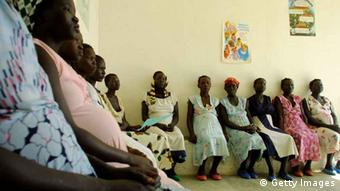
The health system is broken not only just in a community level but in a national level in South Africa. The best treatment goes to those who are affording, with expensive equipment and exceptional privileges just because of having more money and with money comes privilege and power. For women in the Kenville community however, the unemployed women, the women who face abuse from spouses on a regular, the women with less education and skills, there is no privileges because there is no power brought by money. Need not to say that it is immoral or unethical for other women to have money and the ability to afford the best health care but why should the best health care only be available to those with money as if those without it are not human enough. Even when the society is aware of such unethical behavior and ways of the health care system, we still sit back and watch women and children suffer. Why are we not creating more opportunities for women and children to feel safe in their communities? Why are we immorally denying women the basic human decency of maternal health that we will in turn benefit from when their children become the future of our nation?
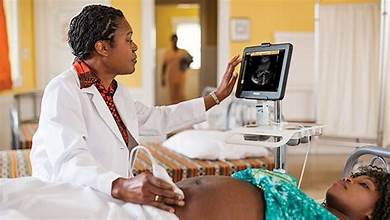
Expressed on this blog are just some of the many things that occur within the community. The mere act of blogging about it will not shift the gear however, it may raise awareness somehow. Awareness that our health care system is extremely flawed and that we as a society are need to re-evaluate ourselves. We need to re-evaluate our values and what is important to us as a people. Is it money or is it the children that are the future of this nation? Is it money or the people who will carry the children that become the future of this nation? And perhaps find the root of community issues and tackle them from the source.
REFERENCES
Berthelon, M., Kruger, D., & Sánchez, R. M. (2018). Maternal stress during pregnancy and early childhood development. Social Science Research Network. https://doi.org/10.2139/ssrn.3170241
Chauke, L. (n.d.). Most maternal deaths are preventable: how to improve outcomes in South Africa. The Conversation. https://theconversation.com/most-maternal-deaths-are-preventable-how-to-improve-outcomes-in-south-africa-181282
Karlsen, S., Say, L., Souza, J. P., Hogue, C. J., Calles, D. L., Gülmezoglu, A. M., & Raine, R. (2011). The relationship between maternal education and mortality among women giving birth in health care institutions: Analysis of the cross sectional WHO Global Survey on Maternal and Perinatal Health. BMC Public Health, 11(1). https://doi.org/10.1186/1471-2458-11-606
Loesche, S. (2018). Maternal Health and Occupational Therapy: Exploring Our Role with New Mothers. OccupationalTherapy.com. https://www.occupationaltherapy.com/articles/maternal-health-and-occupational-therapy-4385
Regis College. (2023). The Importance of Maternal Health Care. Retrieved 27 July, 2023 from https://online.regiscollege.edu/blog/maternal-health-care/
UNICEF Data. (2023). Maternal Mortality Rates and Statistics. Retrieved 26 July, 2023, from https://data.unicef.org/topic/maternal-health/maternal-mortality/
Statistics South Africa. (2022). What do South African Households Look Like. Retrieved 27 July, 2023, from https://www.statssa.gov.za/?p=15473
0 notes
Text
Yours truly, the younger you.
My grade 12 teacher used to always ask us “where do you think you will be in five years?” and it’s funny how as a child you think that five years is an extremely long time. Five years later when my teacher asked me that question, I am not even close to where I thought I would be. It is so fascinating how we always look back and reflect on our previous experiences and think of what we could have done to change things that happened. But rarely do we ever sit and look to the future and reflect on where we will be and give ourselves advice on how to handle life in the future with the knowledge we have right now. There is a lot of advice I would give to my younger self but what advice would I give to my older self with the little knowledge I have now?

If I was writing a letter to my future self, it would go something like this:
Dear Future Self,
You have come a long way, dear. Look at you. The accomplished independent black woman you have always wanted to be. Be proud of yourself and all your achievements, do not downplay all that you have accomplished. You did well. Remember to always be kind to yourself. You have been through so much and you need to always be soft and gentle to yourself and your mental health.
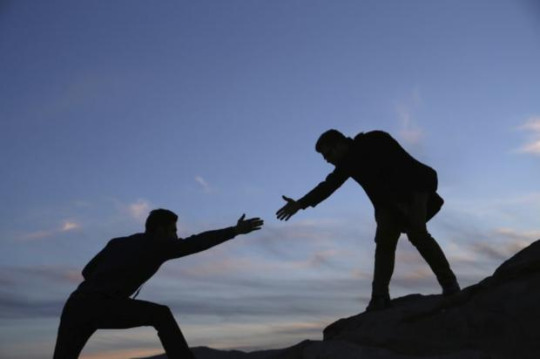
Do not be afraid to ask for help and accept help when it is offered to you. You are strong and beautiful but you are also human. Do not be afraid to show affection and love to people who prove worthy of it. Receive affection from family and friends as pure as it comes.
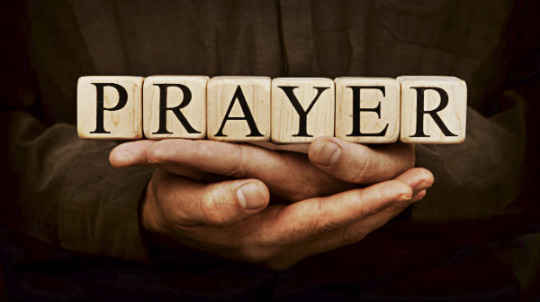
Adam Clarke once said, “prayer requires more of the heart than of the tongue” therefore remember to pray without ceasing, God will never forsake you in your times of need. Spend time with your mom whilst you still have her around and make every moment with her count.

Professionally you are doing great. You have chosen a career that is perfect for you and your calling. God gave you the calling to help people and being an Occupational Therapist will help you do just that. It’s okay to venture out, start a business, or venture into a part of OT you never thought you would. I must say, however, working with clients is a bittersweet experience. On other days you will feel like the best OT the world has to offer and on other days you will constantly ask yourself ‘what am I doing? But worry not because the gratification of fulfilling your calling every single day is worth every experience you will go through. In the words of Helen Keller, “I long to accomplish a great and noble task but it is my duty to accomplish small tasks as if they were great and noble”. If you have given a client the opportunity to have that small engagement in any area of occupation, you have done a great noble task. What you do for individuals is great and very noble. Should you ever feel lost and alone, never be afraid to ask the ones before you how things are done, the world has many amazing OTs you can learn a thing or two from. The most famous OT quote that you should always look to in times of distress in your career is a quote by Valeria Pena and it says “Occupational therapy turns hopeless into hope, can’t into can and impossible into possible”. This quote got me through the most difficult times as a student working with clients because it makes me realize that when clients think they are hopeless, we as OTs bring back that hope, when they think they cannot participate because of an illness or disability, we show them that they can and when they think it is impossible to be a functional independent human being, we as OTs show them that everything and anything is possible. You are doing more than enough. You are enough.
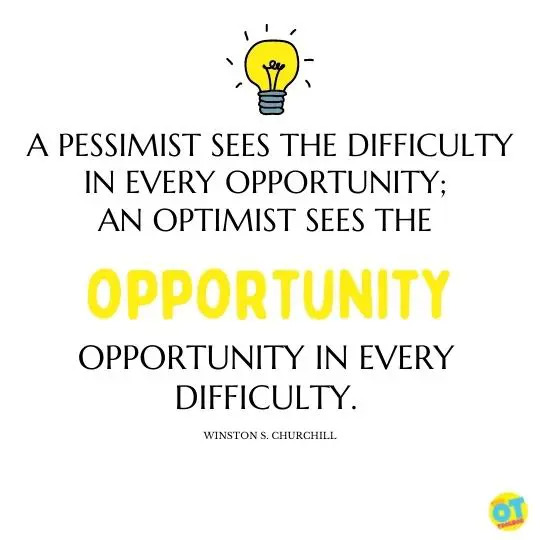
Yours truly,
The younger you.
REFERENCES
The OT Toolbox, (2022). Occupational Therapy Quotes. Retrieved October 29, 2022, from https://www.theottoolbox.com/occupational-therapy-quotes/
SearchQuotes, (2022). Adam Clarke Quotes. Retrieved October 29, 2022, from https://www.searchquotes.com/quotes/author/Adam_Clarke/
GoodReads. Helen Keller Quotes. Retrieved October 29, 2022 from https://www.goodreads.com/author/quotes/7275.Helen_Keller#:~:text=%E2%80%9CI%20long%20to%20accomplish%20a,they%20were%20great%20and%20noble.%E2%80%9D
0 notes
Text
Never has the silence been so loud.
The movie “The Silent Twin (2022)” is an exceptional film based on a true story about two young twin girls who did not speak in public. June and Jennifer Gibbons were born in 1963 to their parents Gloria and Aubrey Gibbons. The film looks at the lives of these girls from their early childhood to their late twenties. June and Jennifer were diagnosed with selective mutism which is an anxiety disorder that is commonly seen in children who cannot speak in selected social settings (Cuncic, 2022). However, what was more fascinating about these twins is that they did not even communicate with their parents or siblings. They did, however, communicate with each other in their bedroom where nobody could see or hear them. They also had an incredible imagination and would write stories in their diaries which would, later on, be published in their early twenties.
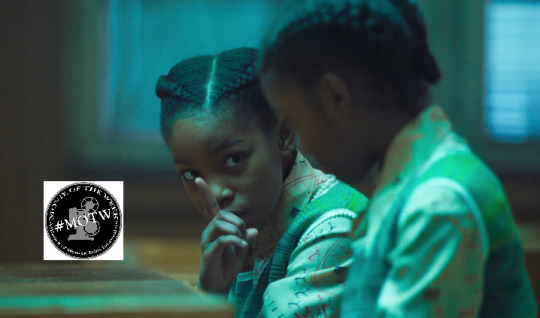
The film is not without daunting tension, however, filling the viewer with an immense curiosity of why the girls do not speak, when will they speak, or even what will happen to them if they did decide to speak to others. Another captivating feature about these girls is that they did everything in absolute unison. They would walk simultaneously in the same pattern one behind the other as if the other was mimicking the way the other twin walked, they would eat in the same manner and everything else was done with absolute accuracy as if it was one person split into two.

This disorder greatly affected the way the twins socially participated at school. Academically they were very bright however with their inability to communicate the school could not cater to them for much longer. Play with other children was also affected as they were being bullied at some point in school for being different, which in turn affected their education.
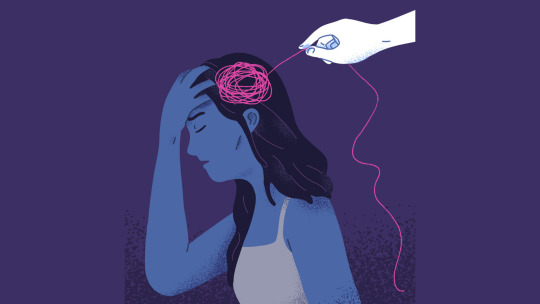
In their twenties, the film reveals how toxic their condition became not only to others but to one another as well. The girls were also believed to have a psychopathic disorder due to an incident where they burnt down a local store and were later on sent to a mental institution. According to Anderson and Keihl (2014) psychopathy is characterized by inadequate emotional reactions, a lack of empathy as well as an inability to control one’s behavior, frequently leading to chronic antisocial behavior and criminal activity. At the mental institution they had to be separated however they could not eat, bath, walk or even move without the presence of the other twin. They neglected personal hygiene as well as their leisure participation which was writing stories. Insanity was slowly creeping in for the twins to an extent that June attempted to commit suicide but was unsuccessful. June and Jennifer knew that for one of them to live a peaceful and happy life, the other must die. Thus, Jennifer revealed that she knew she was the one who was going to sacrifice her life for her sister. She began to starve herself and became incredibly ill. Sadly, Jennifer succumbed to her sickness and died on their way to another mental institution.

In our practice, as well as evident in this film, a mental condition is just as disabling in occupational function as a physical disorder. According to a study by Madi, Ismael, Hamaideh, and Jaber (2022) people with mental illnesses expressed dissatisfaction with their performance in occupational areas. We as health practitioners need to understand that these conditions are just as traumatizing to our patients as they are to people around them. We mainly tend to think that when we treat an individual with a mental condition, we are treating them to better the lives of their significant others however we should strive to treat patients because we want their lives to be better and enable them to live meaningful lives for themselves. According to Gilbert (2019), we are social beings and we were never meant to live in isolation. This is true for individuals with mental conditions as well, they are meant to live better and more meaningful social lives regardless of their condition.

REFERENCES
Cuncic, A. (2022). What is Selective Mutism. Retrieved October 15, 2022, from https://www.verywellmind.com/what-is-selective-mutism-3024702
Anderson NE, Kiehl KA. Psychopathy: developmental perspectives and their implications for treatment. Restor Neurol Neurosci. 2014;32(1):103-17. doi: 10.3233/RNN-139001. PMID: 23542910; PMCID: PMC4321752.
Madi, H. I., Ismael, N. T., Hamaideh, S. H., & Jaber, A. F. (2022). Occupational performance and satisfaction of individuals with mental disorders in Jordan: A cross-sectional study. British Journal of Occupational Therapy. https://doi.org/10.1177_03080226221089853
Gilbert, S. (2019). The Importance of Community and Mental Health. Retrieved October 15, 2022, from https://nami.org/Blogs/NAMI-Blog/November-2019/The-Importance-of-Community-and-Mental-Health
0 notes
Text
The uncomfortable reality Covid-19 has left us with.
The start of the pandemic felt like the end of the world for many people. Here we were trying to fight for our lives in a way that we never imagined we’d have to. The lives of millions of people took a stand still and how could we have possibly figured out how to make it out alive. Thousands of people lost their loved ones and thousands more lost their employment and only source of income. We have read the papers and heard it on the news about how the pandemic had a major impact on the global economy and how Covid-19 left countries turning their pockets to try and save the economy. We heard how thousands of business owners had to shut down their businesses which some unfortunately until this day, have never returned back to business. We heard how students and learners had to transition from contact learning to virtual learning in the blink of an eye and how that affected their studies. However, there is an aspect of our lives that happens behind closed doors that we never delve into, that was heavily impacted by the pandemic: our mental health.

MENTAL HEALTH IN SOUTHERN AFRICA?
Even though the society knows about mental health and the impact it may have on an individuals’ daily life, in many cultures it is still not recognized as a real illness. The South African context is one of many cultures in the world where most of its people do not recognize mental health as a real illness that needs professional attention. According to Mental Health First Aid (2019), there are four ways in which culture can impact on mental health; cultural stigma, understanding the symptoms, community support and resources. This is exactly what was happening in a lot of South African homes during the pandemic, mental health was not recognized as something that needed much attention nor where the symptoms of mental instability even recognized. Even when people are known to have a mental health issue, they lack community support and the resources to actually get the help they need. During the pandemic, the only priority for the country was the economy and how much money the country is losing because of the virus. Looking behind closed doors, what impact did the pandemic actually have on people who already had mental health issues and how many people developed mental health issues because of the pandemic.
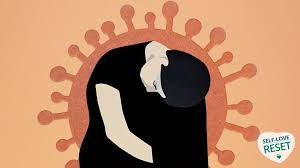
HOW COVID 19 IMPACTED MENTAL HEALTH PEOPLE?
Having a mental illness and trying to not to contract a virus that might kill you all at once just might have been one of the hardest things a lot of individuals had to face. Many individuals with depression also have an anxiety disorder and the pandemic exacerbated anxiety in many people. The stress of school, contracting the virus, losing your job and the vaccine certainly made a lot of peoples’ anxiety to rise to an ultimate high. The constant stressing and worry for the next two years of the pandemic seemed to be never ended for everybody. According to Giner, Vera-Varela, de la Vega, et al (2022), “The relationship between suicides and natural disasters is known, thus women, adolescents, the elderly, those who suffered depression or post-traumatic stress disorder (PTSD), and those who had less social support or were without parents, have a greater risk of suicidal behavior”. This further proves that people suffering from mental issues such as depression and PTSD where at a greater risk of suicidal behavior during the pandemic. Giner, Vera-Varela, de la Vega, et al (2022) further states that approximately 5-15% of the worlds’ population had suicidal ideation during the beginning of the pandemic. Abbott (2021) stated that a study from 43,000 individuals revealed that 9% had anxiety symptoms, 4% had some form of depression, and more than 12% of people were suffering stress related to COVID-19. Mental health issues increased for those who already had them and developed for those who did not have them due to the Covid-19. Those who are receiving the help they need are fortunate, but what about those who have not even reported that they have a problem, what about those who are bound by cultural stigmas that all people go through hardship and that facing difficulties in life does not mean you are all of a sudden with a mental illness that needs professional attention. Why are we ignoring the damage covid 19 has caused to our mental health as a society?

HOW MY EXPERIENCE TRANSLATED TO MY PROFESSIONAL PRACTICE?
Another issue that we seem to be avoiding as a society is how front line workers, especially health professionals, were mentally affected by the pandemic. They spent hours and hours trying to save other people’s lives but who is there to save the hero’s when they have saved everybody else? They too had the same depression and anxiety that other individuals faced. We were so dependent on health professionals to help save the lives of millions of people that we forgot that they are human as well. According to WHO (2021) "between 80 000 and 180 000 health and care workers could have died from COVID-19 in the period between January 2020 to May 2021". This is one of the problems I personally faced as a health science student in my practice. How possibly could I effectively and efficiently treat clients when I have my own mental health issues I’m dealing with. For the longest time, I had to put my needs on the back burner and figure out how to put on a brave face for the patients I will be working with. This is not the best ways to maneuver your life, but the ball has to keep rolling.
TRANSITIONING BACK TO NORMAL? Maybe? Maybe not?
If I had a penny for every panic attack I have had with relations to transitioning back to normal, I would be a millionaire by now. It is very shocking to me how thousands and thousands of Covid 19 cases just vanished and now we have to remove our masks when we are in public spaces. I do not mind for things to go back to normal because the ball needs to keep rolling however, where is the virus? Did it just vanish overnight, and why are we not wearing masks anymore? Transitioning back to normal will be great as an Occupational Therapy student because that means that we can now assess clients effectively and treat appropriately and accordingly. The most crucial part of OT is assessment and one cannot fully assess a patient virtually. Going back to normal will also mean we can learn effectively because let’s face it, how much of work do you really get done sitting in your bed wearing pajamas. However, what we may need to be open minded about is that no matter how “back to normal” things may seem, the amount of trauma and mental health issues the pandemic has brought for us will never allow us to live as normally as we did before.

REFERENCES
Mental Health First Aid (2019). Four Ways Culture Impacts Mental Health. Viewed 04 September 2022 from https://www.mentalhealthfirstaid.org/2019/07/four-ways-culture-impacts-mental-health/
Abbott, A. (2021). Covid's Mental Health Toll: How scientists are tracking a surge in depression. Viewed 04 September 2022 from https://www.nature.com/articles/d41586-021-00175-z
World Health Organization, (2021). Health and care workers death during Covid-19. Viewed 04 September 2022 from https://www.who.int/news/item/20-10-2021-health-and-care-worker-deaths-during-covid-19
0 notes
Text
Becoming.
I am standing at the edge of becoming an Occupational Therapist and I cannot shake this question out of my head; is this what I really want to do for the rest of my life?
To be honest I never thought I would ever be an OT student. When I was in high school, I did mechanical technology because I wanted to be a mechanical engineer. Yes, I know, mechanical engineering and OT are literally worlds apart. But unfortunately, I was and honestly still am, very bad at maths and physics therefore I did not meet the requirement to enter an engineering course. I started applying for random UKZN courses that I did qualify for, and Occupational Therapy was one among many. Unfortunately, the first time around, I was not accepted into the course, and I ended up doing an Arts program at Howard College. But I guess when God brings you on Earth for a certain purpose, you will fulfil that purpose no matter the odds.
I applied again into OT and lucky me, I was accepted, and I was ecstatic. I had no idea why I was so excited because I did not even know what OT was until only a few months back, but I was. Then my journey began. My first year as an OT was not all that scary because it was not my first year at a university. I was already familiar with a lot of things. Surprisingly, I was very isolated as a first year OT student, I did not have friends until my second year of the course.
I really enjoyed OT modules even though I did not understand what it was really all about. To be honest even now I am still trying to figure it out, but I am slowly but surely finding my feet. I was very bad at anatomy modules, and I ended up having to repeat 2 anatomy modules. This setback sank me into a very dark space where I felt like I will never be a good enough OT if I do not even know the human body. I even though of leaving the course at one point because I felt like such a failure with no direction. However, all thanks to student support services, I was able to get the help that I needed because this was starting to sink me into a depressive state. I ended up not leaving the course and started to evaluate why I did not pass those modules in the first place. I realized that because I had no passion for OT, whenever I studied, I did not study to fully understand, however I studied just to write and pass the tests. Counselling helped me figure out who I am and what I love to do. I found out that I absolutely love helping people in anyway possible. I have so much compassion for people and Occupational Therapy is an excellent way to channel that compassion.
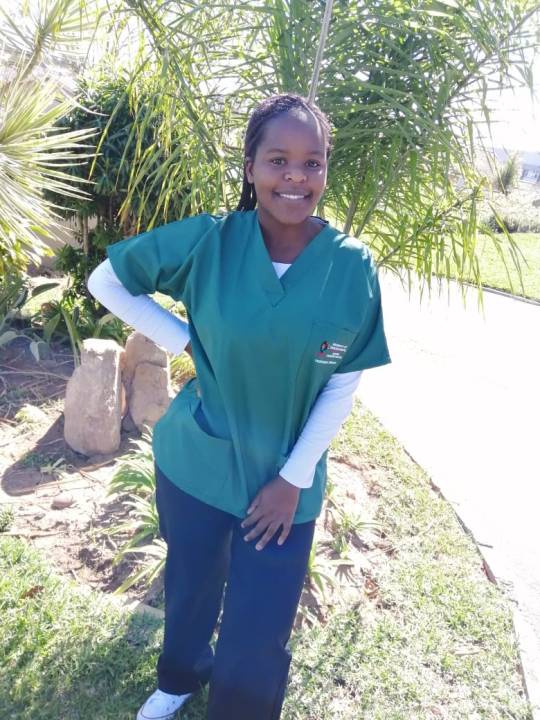
I started falling in love with OT when we started doing practicals. Being with clients and helping them do better and be better gave me so much gratification. The more I loved OT, the better my marks also became. Now I am on my best journey of becoming an OT and I cannot believe I once contemplated of leaving it all. It is a bittersweet journey I must admit. On other days you feel like you are on the right track and on other days all you do is cry because things can get a little bit heated. But in the famous words of the 33rd president of America, Harry S Truman, once said “If you can’t stand the heat, get out of the kitchen” (https://www.brainyquote.com/quotes/harry_s_truman_162028). And I will stand this heat if I have to because every day is a new experience and I could not think of a better profession I would rather be doing. And yes, this is what I really want to do for the rest of my life.
1 note
·
View note